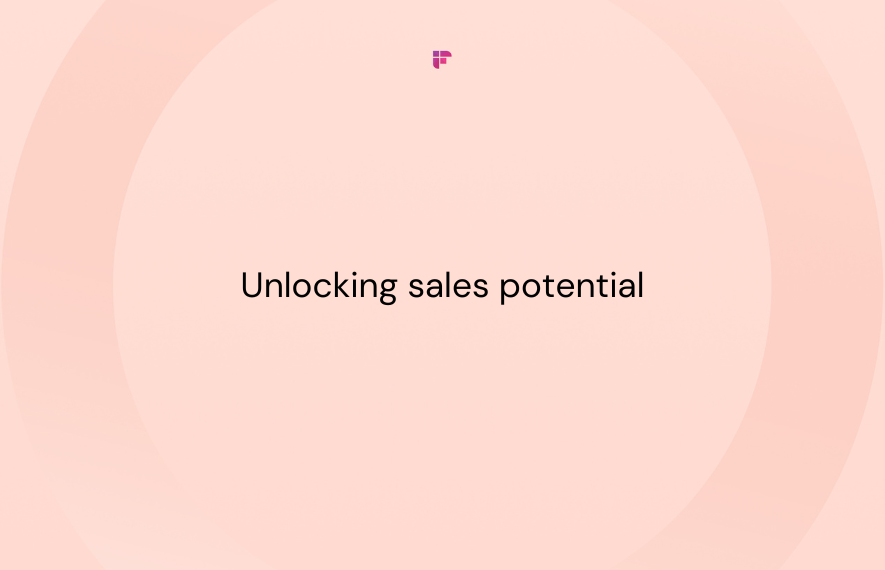Video is the future of sales. Learn how to use video in sales now, because within a few years any sales department which does not know how to effectively use video is going to fall behind and struggle to even make the first contact with a lead.
As our world becomes ever more remote and online, using video in sales emails is going to increasingly bridge the gap between inside sales by phone and email, and outside sales done in person.
Sales is a tough job. Even sales professionals who do business in person struggle to turn more than half of their leads into a deal. Doing online sales makes a hard job even harder. Humans struggle to convey that emotional, human factor through impersonal emails or faceless phone calls. So what if there was a way to get the best of both worlds? The ease of access and fast pace of online sales combined with the benefits of in-person, face to face communication?
That’s why increasing numbers of sales professionals are using video in sales.
Using Video in Sales: Why Should You?
At first glance, a video may not seem like an intuitive match for sales. Is a potential buyer really going to be persuaded by some impersonal, pre-recorded video? Studies show that, yes, a lot of them actually will be persuaded by video.
In particular, using video in sales emails is a powerful tool to get the attention of a lead and get them to actually read or look at what you’ve sent them. As an alternative to written words on a screen, seeing a human being, hearing their voice, watching their facial expressions, even through a recorded video on a screen, produces markedly superior sales metrics.

All sales is a numbers game, but the numbers that matter in online sales can be deceptive. On the one hand, it’s incredibly easy to blast out huge numbers of emails or newsletters or alerts to vast amounts of recipients, but that number is irrelevant.
It does not matter how many emails are sent out by a sales team (or whatever other technique the team may be using); the number that matters is the number of people who actually open the email and look at the sales pitch.
This is the difference, in telephone-based inside sales, between making a phone call, someone actually answering the phone, and talking to a decision-maker. A sales professional can make a thousand phone calls a day, if no one ever picks up the phone at the other end then that’s the same as making zero calls.
What Are Sales Videos?
Simple: Using video in sales is nothing more than a sales team or even an individual sales professional recording their own videos and sending them to their prospects and leads, usually by email.
These videos can be less than a minute long and recorded on a cell phone or a webcam, or they can be professional productions recorded in a studio. The videos can be nothing more than a brief introduction--a kind of “recorded virtual handshake”--or they can be in-depth product demos.
And it’s this flexibility that makes using video in sales emails such a useful tool in the sales’ toolkit. Videos can introduce a salesperson, explain who they are, what their company does, what products or services they provide, and how it can help the person they’ve reached out to, or anything else which requires a human touch.
When using video in sales for inside sales, videos are an ancillary tool--they cannot entirely replace well-written emails or timely phone calls--but, in combination with those other tools, the video becomes a powerful method of increasing response rate and, ultimately, deals closed.
Why Your Team Should Be Using Videos In Sales Emails
1. Increases Email Opens
The first and most obvious reason for using videos in sales is that it leads to more sales! Specifically, when used with emails, including a video in the email dramatically increases the rate at which recipients open the email and actually look at its contents.
It goes without saying that an email that is never opened can never result in a sale, so that first vital step--getting the open--is crucial to ultimate success. Video is a way to dramatically increase the chances of any prospect or lead opening your email.
2. Increases Responses
Following on from point one, the second reason for using video in sales emails is that it leads to a dramatically improved response rate to your solicitations. All sales is a numbers game, and the more emails are opened, the more responses you will receive.
But wait, there’s more! Videos not only provide a quantitative benefit, but a qualitative one as well; that is, more people are responding to your emails not just because more people are opening your emails, but including a video in your first contact will result in more responses per open, not just more responses per email sent.
Videos are engaging, personable, and often it’s just easier to watch a video than it is to read an email. People are lazy. People are pressed for time. A lot of people would rather open a video and listen to it while they do things on other tabs than sit and read through an entire email, or even skim it, which takes 100% of their attention.
Just that marginal difference--reaching people who don’t like reading emails, but are willing to listen to your elevator pitch, if you put it in an audio-visual format--is enough to increase email responses by more than a third.
3. Creates a personal relationship remotely
Sales is about relationships. Any sales professional worth their salt will confess that, at the end of the day, product specs, profit margins, return on investment, all the buzzwords we’ve become accustomed to throwing out there don’t make nearly as much difference as the relationship between the lead and the salesman.
While not quite the same as an in-person meeting, a video does much to bridge the gap between email and phone calls. It enables a person to see their sales contact, who is talking to them, perhaps also what their product looks like. It makes the lead feel a connection to the salesperson which can later become the basis for a close.
Types of Sales Videos
When it comes to how to use video in sales, there are, of course, many different styles of videos. These range from formal compositions shot in a movie studio with professional crew and equipment to quick and dirty “one takes” shot on a cell-phone. The aim of this article is just to cover the three main styles which your team can begin using today.
For someone with no video production experience, the idea of making videos may seem daunting, even overwhelming. Don’t worry! You don’t need to be Steven Spielberg or have a master’s degree in video production to successfully exploit video to its full potential as a sales tool.
For starters, your sales professionals are professionals! They already know how to make sales; all you need to do is film it. There are a litany of guides online to help with making and editing videos. There is also an array of film editing software on the market, ranging from the simple to the complex, from completely free to download (or already pre-installed on your computer), to paid subscription services which provide professional-level editing tools and accompanying tech support.
Regardless of which tools you choose to use, these are the three methods of making a video which are quick, inexpensive, and effective:
1. Selfie
By far the simplest technique for using video in sales, this involves using a webcam (which is built into most laptops as a factory standard these days) to just film yourself talking to your computer. This format has several advantages, specifically the ease of making videos.

To start, there’s no need to go out and buy any special equipment. You can probably just use your work computer, and these days the picture quality from integrated webcams even on budget laptops can be pretty good too! Likewise, because there’s no special equipment, there’s no special training or education needed either; just bring up your computer’s webcam app, and hit the record button.
Another big advantage of this method is that it’s very easy for a seasoned sales professional to make a compelling, personal sales pitch, simply by reciting the sales pitch or demo they’ve been using and have memorized down-pat. With a little practice, you could even make your video in a single take, eliminating any need for video editing.
Alternatively, if perhaps you’re using a new elevator pitch, or perhaps want to customize your message for a specific client or lead, you can have a script or slideshow on-screen which the sales professional can read and begin using video in sales emails. With a little practice and some clever camera angles, it will look like you’re staring directly at your intended customer.
And that’s another key advantage: eye contact! Studies show that eye contact is an incredibly powerful psychological force, one which can lead to increased sales and cement long-term relationships. The selfie-style video is a great avenue for a direct, face to face appeal where looking your lead in the eye is accomplished by looking head-on at the camera.
Although selfie-videos can sometimes appear unpolished or amateurish, a little bit of care and effort can make even the simplest of videos appear professional, grabbing the intended viewer’s attention, and often carrying a sense of urgency---you can always say that this was the quickest way to get the details of a screaming good deal to your mark, and you made a selfie-video just so he or she wouldn’t miss a great opportunity.
2. Screen Share/Walkthrough
The second style follows on from the first, in that it is simple in conception, quick and easy in execution, and doesn’t require any special equipment to do. It’s the screen-share walkthrough, where you record your screen as you go through a demo or present some other kind of visual medium while you explain the details orally.
Though you can use the screen-share in many ways, it naturally lends itself to demos--as the name suggests, you can demonstrate how your product or service works, what it looks like, how it can help your intended customer, and walkthrough the way it is used.
The screen-share does require some prep-work. Avoid any distractions by closing all unnecessary windows and programs before hitting the record button. Likewise, it’s a good idea to have what it is you’re going to show in the video queued up and ready to go prior to recording. And if there are multiple steps in the demo, having it ordered correctly is essential!
One small downside to the screen share technique is that it turns your sales professional into a disembodied voice, with no face or eye contact to humanize the video. This can be remedied by including a short introduction and conclusion segment where the sales rep speaks directly to the camera before going to the screen share.
On the plus side, with just some simple editing skills, you can record your demo in small segments, omitting any unnecessary pauses where you might need to navigate from one window to another, for instance, and then piece these segments together in the proper order in post-production. Though this does require some editing, even the simplest (and cheapest or completely free) video editing software is more than capable of handling this, and the skill required should be within the grasp of all sales professionals or managers.
For more technical products or products used on a computer, like software or a web service, the screen share really gives prospects a feel for what they would be using, what they would get for their money, and helps clarify any tricky technical aspects of the product. This especially capitalizes on video’s ability to connect with visual learners, a distinct advantage over emails.
3. Presentation

This is the most complex of the three popular video formats, but that doesn’t mean it is beyond the capabilities of your sales department. The presentation technique combines elements of the previous two formats, merging screen-share or recordings of your product in use with video of your sales professional directly addressing the camera.
Although you can directly combine the two methods discussed earlier, the presentation is more than just a selfie overlaid onto screen share and, done correctly, is a sure-fire way to create an engaging and informative video.
Using a camera on a tripod (or multiple cameras, from different angles), put your sales professional in front of a green screen or an engaging backdrop. This can even be something as simple as a whiteboard, on which they can write bullet points or draw diagrams.
Have the sales professional stand up straight, smile, and directly address the camera, giving an introduction to the team, the company, and the product. Then, combine video of your sales professional delivering the sales pitch with cuts to examples of the product, shots of clients using the product (or recorded testimonials), and infographics.
For those so inclined, this is also the ideal format for using specialized recording software to record specific parts of your computer screen (instead of the entire screen), which can give your video a professional, polished look. This is especially true if you can combine the video of your sales professional talking overlaid onto the recordings of your software or product demo, to both show your product and have an engaging human being on screen at the same time.
This method of using video in sales requires a little more sophistication with editing software, and a more deliberate approach to lighting, camera placement, and camera selection--using a real camera instead of a mobile phone can make a dramatic difference--but the results are unequalled. Done properly, you can make a professional-level video demonstrating your product and making your sales rep look like the next Steve Jobs.
Get Started Using Videos for Sales In Your Company
As outlined in the ‘how to’ section, videos can be simple, quick, and easy to use. There’s no reason not to begin using them immediately.
The easiest way to get started using video in sales is to brief your sales team on the value proposition of sales videos. They may express some skepticism or have reservations, especially if they have no experience with video production or do not know how to use video in sales, but this can be easily overcome by having them record a simple “Hello” message from their work computer webcam or cell phone.
A brief video from each member of your sales team saying “Hello, I am [my name here] reaching out to you today to talk to you about [your company name here] and the benefits we provide…”---no more than a minute long, it shouldn’t take more than five minutes to record and upload, and each salesperson can then begin immediately including them in their emails to prospects, leads, and to already established contacts.
From there, it is recommended that the sales team plan out two or three videos of different types: an email for the first contact (which can be the same as the “Hello” video), an email for product demos, an email for next steps after the deal is closed, and possibly also an email for common objections.
Doing a video “just because we have to” with no thought behind it or plan to incorporate video into a wider sales strategy will ultimately be counterproductive.
Useful Tips for Using Videos in Sales Emails
1. When using video in sales, always have your sales professionals look directly at the camera in any videos where you can see their face on the screen. Eye contact is a powerful psychological force, not to be left unexploited!
2. Similarly, make sure anyone on camera is smiling. It’s a simple trick, one of the oldest in marketing, but smiles and happy looking people get more calls returned and more deals closed than dour, grumpy, sour-faced salesmen who look disappointed that their boss is making them do some dumb video to try to get more customers.
3. Get a good microphone for better sound quality. Many people don’t watch videos so much as listen to them, and everyone will be more likely to actually listen to what is being said if they can hear the sultry, soothing tones of your sales personnel coming from a good microphone and not some tinny, cheap webcam mic. Although laptop microphones’ quality has improved dramatically in recent years, as have those on cell phones, they are still not as good as a professional level microphone. Many good-quality, plug-in USB mics exist on the market, ranging from as little as $40 to hundreds of dollars, and will make your sales professionals sound like….well, professionals.
4. Include your company’s watermark or logo in the frame of the video. This can be done with relative ease on most video editing software, even the free ones, and will ensure a higher percentage of people who watch your company’s videos remember the company that reached out to them.
Also, if you’re producing more ‘general purpose’ videos (like how-to guides on using your product, for example), it will generate free publicity for your company when the video gets shared around (and also discourages anyone from passing off your video as their own work).
5. Put “Video” in the Subject Line of your email. You’d be amazed at how many people never even notice there is an attachment or link to a video in an email unless it’s mentioned in the subject line. Plenty more people won’t trust the link or attachment if it’s not mentioned in the subject line.
6. Upload your video to a reputable, third-party video hosting site (or your own company’s website). Everyone trusts a link to a YouTube video, much more so than they trust random attachments in an email.
In addition, there are technical issues to consider. Your intended recipient may not have the authority to download attachments on their work computer, and possibly may not even have the correct software to play the video. And, if their internet connection isn’t good, downloading the video could take several minutes (by which time they may have lost interest in even watching), whereas a link will at least open immediately and they can see the title of the video, who uploaded it, and a video description right away.








